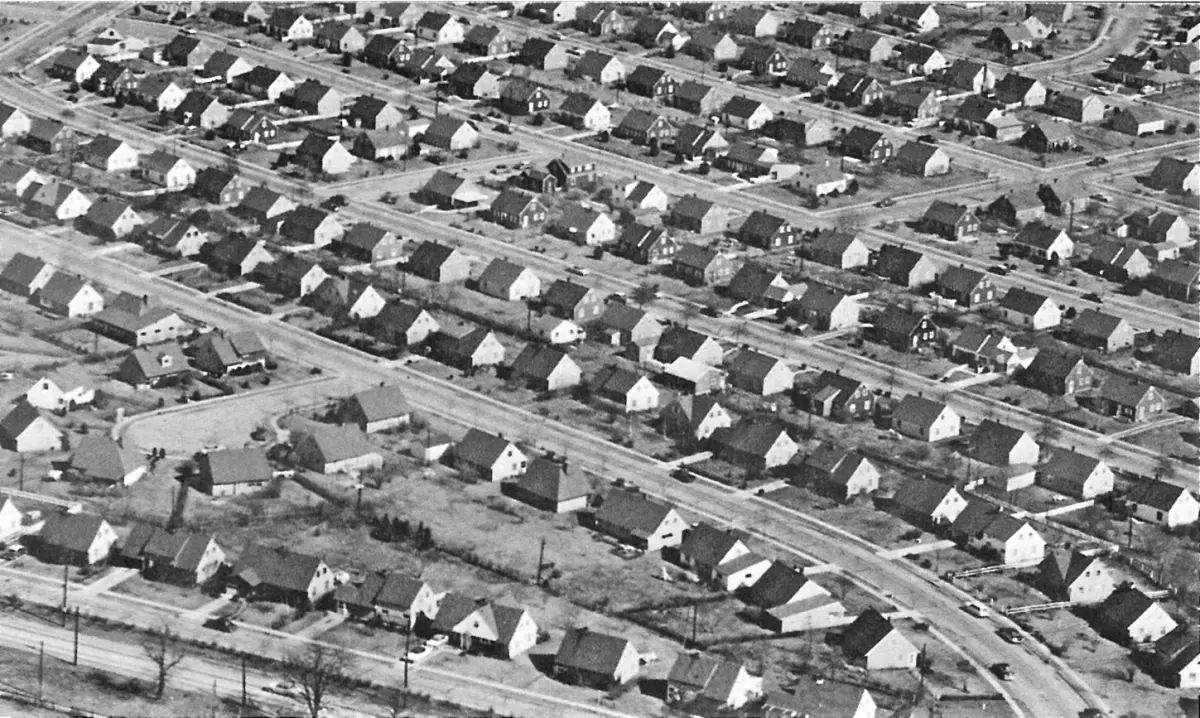Introduction
Have you ever wondered about the origins of the black-white wealth gap? To truly comprehend this complex issue, we must delve into the remarkable tale of William J. Levitt. Born into a real estate family during the Great Depression, Levitt had a pivotal role to play in shaping the course of American history. Today, we'll explore his story and gain fresh insights into how it has contributed to the enduring wealth disparities we witness today.
The Birth of Levittown and Suburbia
In 1947, Levitt introduced the world to the first "Levittown" on Long Island. This groundbreaking development featured affordable, mass-produced houses that catered to the growing middle class. The demand for larger homes, fueled by the post-war Baby Boom and newfound prosperity, made Levitt's venture a resounding success. Levitt's innovative approach to housing earned him the title of "the father of modern suburbia."
Exclusionary Practices and Racial Inequality
However, there is a dark side to Levitt's legacy. Despite his accomplishments, Levitt perpetuated racial inequality. Until 1954, his company refused to sell houses to black families. Levittown and many other communities across America employed exclusionary zoning and restrictive covenants to keep black families out of white neighborhoods. Real estate brokers also played their part, steering black individuals towards poorer areas.

The Systematic Barriers
The discrimination faced by black families extended beyond housing. Getting access to mortgages was another uphill battle. The FHA drew red lines around black neighborhoods, warning banks against lending there. Appraisal manuals even encouraged avoiding "inharmonious racial groups." Shockingly, out of the 67,000 mortgages insured by the G.I. Bill, less than 100 went to black individuals.
Lingering Racial Inequality
It is crucial to recognize that racial disparities in housing are not confined to the past. Even today, racial steering remains a prevalent issue. Studies have shown that it occurs in the majority of cases. Redlining, although officially abolished after the Civil Rights Act of 1968, persisted in private banks for years. Furthermore, during the early 2000s, subprime lenders targeted the same neighborhoods that had long been denied mortgages, exacerbating the wealth gap.
The Accumulation of Wealth
Even if we were to eradicate all biases from the system, racial inequality would persist. This is because wealth, much like the mix of balls in a Polya urn, is sticky and self-reinforcing. It doesn't merely get passed down from generation to generation; it accumulates. Intergenerational transfers account for at least half of the average American family's wealth, highlighting how exclusion from homeownership denies black families the most effective means of wealth generation.
The Significance of Homeownership
Homeownership is more than just having a place to live. It is a potent source of wealth creation, outpacing most retirement accounts. With a fixed-rate mortgage, it offers stability and accessibility, unlike the volatile nature of the stock market. Homeownership has been instrumental in building the American middle class.
A Dream Deferred, but not Forgotten
As we reflect upon the black experience in America during this Black History Month and for many more to come, we must never forget the dream. Langston Hughes once pondered, "What happens to a dream deferred?" Lorraine Hansberry, in her play A Raisin in the Sun, addressed the issue of restrictive covenants and provided an enduring answer. Home is not just a physical space; it represents wealth, family, and freedom.
So, will we ever see the realization of this dream? As we navigate the complexities of racial inequality and the black-white wealth gap, let us continue to fight for a new inheritance – one that embraces inclusivity and nurtures the universal human spirit that calls us all home.













